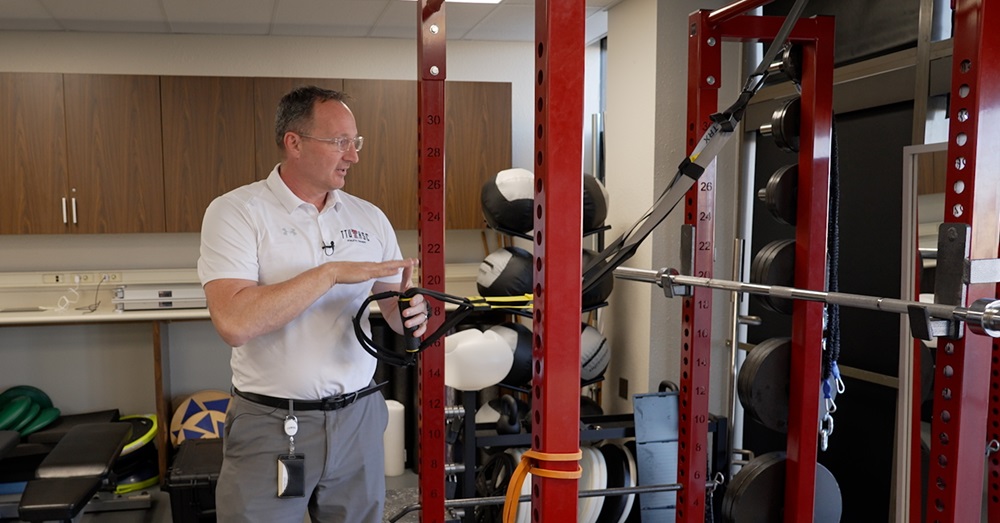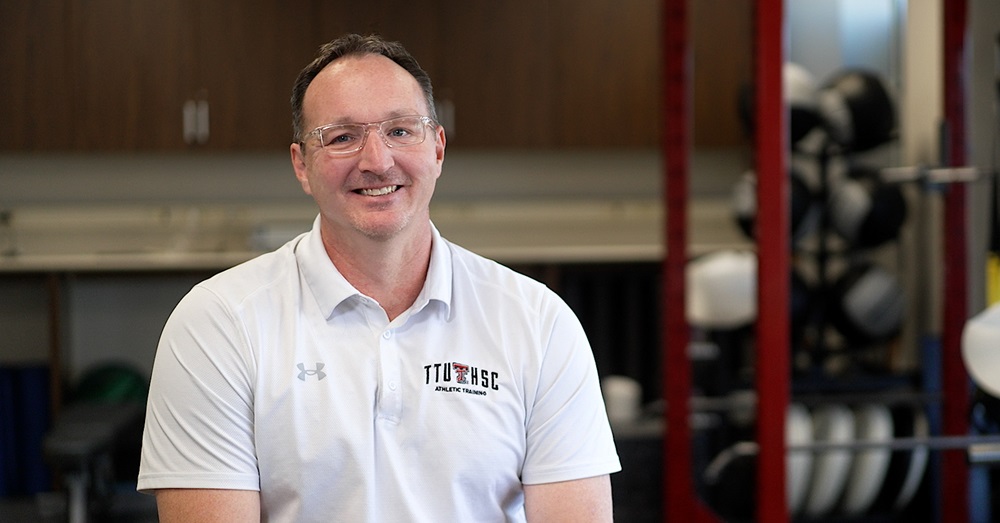New Year’s Resolutions to Exercise: Why Some Flourish While Others Falter
TTUHSC Expert Advises on Success and Failure Factors for Fitness Goals

While starting an exercise routine is a popular New Year’s resolution, abandoning that resolution early on is almost as common. Toby Brooks, Ph.D., director of the Master of Athletic Training program at the Texas Tech University Health Sciences Center’s School of Health Professions, said the journey from resolution to reality is often paved with setbacks. He said that’s where commitment, discipline and adaptability come in.
“People tell me, ‘Oh, I set my New Year's resolution, and you know, it's January 20 and I've already messed it up.’ But what's your February resolution? You know, there's nothing magical about January 1 that says we can only set goals at that time.”
Brooks cited several factors which impact whether a commitment to exercise thrives or dies. Usually, planning and starting a workout routine seems daunting.
“I feel like a lot of times it's paralysis by analysis,” Brooks said. “We assume, ‘I don't have the equipment to do that,’ or ‘I can't afford it,’ or ‘I don't have the time.’”
Brooks stressed that it’s important to be realistic at the outset. “The best advice I can give anyone is to start where you are with what you have, how you are, and figure out a way to make do.”

Toby Brooks, Ph.D.
For beginners, Brooks suggested setting aside a minimum of 30 minutes each day to do physical activities with cardio and strength training benefits. If time is an issue, three brisk 10-minute walks can be substituted for one 30-minute walk. In addition, playing with the kids, doing yard work, housework or sweeping out the garage can provide a workout.
For those looking for a structured startup exercise regimen, apps like Fitbod and Shred can help.
Brooks noted gym equipment isn’t required for an effective workout. There are several basic exercise tools that are versatile and inexpensive. For example, stretch bands can be used for resistance or for assistance in modifying more challenging exercises like pull-ups.
If free weights aren’t an option, strength training can be accomplished using household items such as soup cans, water bottles and milk jugs. Simple strength exercises also can be adapted to tighten the core and improve balance by shifting them from bilateral to lateral movements.
Brooks said motivation matters as much as planning your routine does. Identifying triggers that motivate you toward positive health behaviors will help you stick with them.
“It could be aesthetic,” he said. “It could be performance-based. It could be, ‘I've struggled with illness,’ or ‘I'm a step slower than I used to be and I want some endurance.’ Whatever that happens to be, I think remembering your ‘why’ is important for any goal that you set. It's a lifestyle; it's not just a short-term solution that I'm going to abandon as soon as I've checked the box.”
Brooks cautioned that overly ambitious goals can lead to injuries and burnout. For people coming back to exercising after an injury or illness, or beginning exercise after a period of inactivity, Brooks emphasized that workouts don’t have to be intense to be effective.
“It's human nature to try to pick up where we left off, when in fact, it would be better long term to kind of ease in,” Brooks said. “It boils down to just being sensible and not assuming that I'm just as capable as I was before, when I was in high school or training more often.”
Accountability and support can make it harder to abandon a resolution when challenges come up. Brooks said fitness technology can help by quantifying progress. “We're so data-driven,” he said. “It's an Apple Watch showing me steps. Or there are now AI-enabled scales that can show you what your body would look like at certain weights. And those are all great. If those are motivators for you, stupendous.”
Qualitative results from exercise are important, too. Brooks stressed even seemingly small gains are significant, like decreased stress, a lowered resting heart rate, better balance and increased strength and mobility. Those are things he said friends, family or a workout buddy likely will notice, providing further accountability and encouragement.
Brooks said ultimately, a fitness routine will only be sustainable if it’s one you enjoy. “Exercise should not feel like a chore,” he advised. “It's not a ‘have-to-do.’ It's a ‘get-to-do.’ So, figure out what that is for you. Maybe you love to push weight around. That's great. Get in the gym and lift. Maybe you just love the solace of being out on the road alone. Do that. I'm not going to prescribe a one-size-fits-all. It’s about finding and cultivating how our bodies love to move. It's about longevity. It's about what I can do today that I can keep doing for the rest of my days.”
Related Stories
TTUHSC Dean to be Inducted into the National Academies of Practice as Distinguished Fellow
Gerard E. Carrino, Ph.D., MPH, dean of the TTUHSC Julia Jones Matthews School of Population and Public Health, will be inducted into the National Academies of Practice (NAP) as a Distinguished Fellow of the Public Health Academy.
TTUHSC School of Nursing Celebrates 10-Year Anniversary of the Abilene Community Health Center
The TTUHSC School of Nursing hosted a 10-Year Anniversary Celebration and Open House for the Abilene Community Health Center. The center is one of 71 Federally Qualified Health Centers (FQHCs) in Texas according to the Texas Health and Human Services.
TTUHSC Receives $1.3 Million HRSA Telehealth Resource Center Grant to Expand Telehealth in Texas and Louisiana
The TexLa Telehealth Resource Center, based at TTUHSC, has been awarded a $1.3 million, four-year grant from HRSA to strengthen and expand digital health services in Texas and Louisiana.
Recent Stories
TTUHSC Cancer Researcher Honored by National Academy of Inventors
C. Patrick Reynolds, M.D., Ph.D., director of the School of Medicine Pediatric Cancer Research Center at TTUHSC, has dedicated his life as a researcher to developing treatments for childhood cancers.
TTUHSC School of Nursing Celebrates 10 Years of the Veteran to BSN Program
The TTUHSC School of Nursing recognized the 10-year anniversary of the Veteran to Bachelor of Science in Nursing (VBSN) program during the fall 2025 commencement ceremonies held Dec. 13 in Lubbock, Texas.
TTUHSC Dean to be Inducted into the National Academies of Practice as Distinguished Fellow
Gerard E. Carrino, Ph.D., MPH, dean of the TTUHSC Julia Jones Matthews School of Population and Public Health, will be inducted into the National Academies of Practice (NAP) as a Distinguished Fellow of the Public Health Academy.
